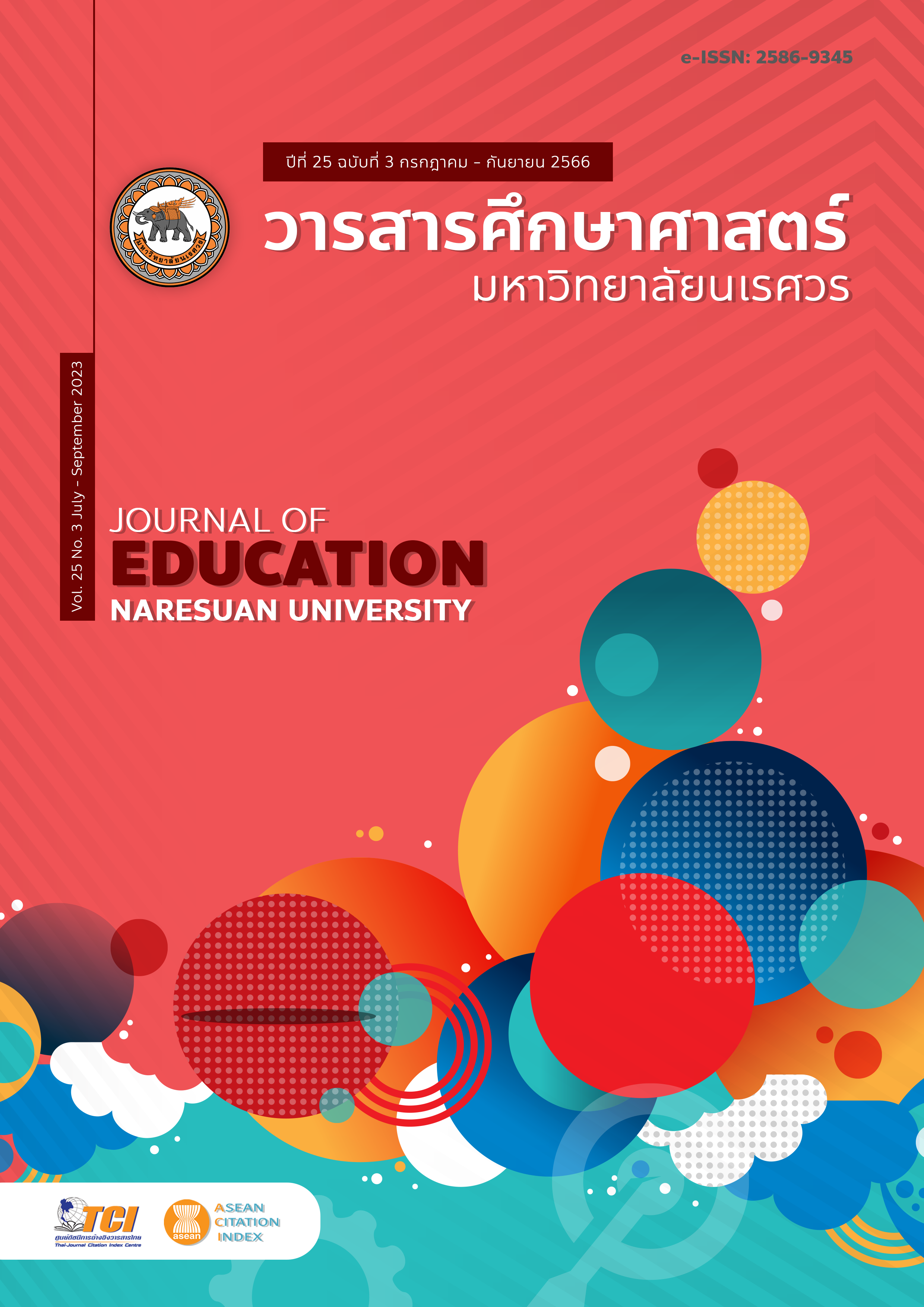THE VIRTUAL TECHNOLOGY TOWARDS FUTURE LEARNING AND DIGITAL TRANSFORMATION
Main Article Content
Abstract
The concept of virtual technology is the application of various technologies in a wide range of operations with an aim to maximize the benefits when working in a virtual learning environment. This advanced technology is directly beneficial to users as it can create more accessible experiences through input devices and 3D rendering devices by accessing virtual spaces and learning through virtual community. Virtual technology is considered a technological advance that not only supports the world’s changes but also encourages learners to focus on self-directed learning and active learning. Plus, real-time interaction enables users to visualize results instantly, which can promote interaction and collaboration and meanwhile increase learning efficiency and learning skills. All of these are indispensable for digital learners because these skills shall enable them to respond well to the digital transformation in the future. Nowadays, instruction management usually applies several formats of virtual technology, e.g., learning through virtual classrooms, operation through virtual laboratories, searching for learning resources through virtual libraries or virtual museums, etc. The said application refers to the application of current technologies in conjunction with input devices and 3D rendering devices and virtual learning environments, such as augmented reality technology, virtual reality technology, mixed reality technology, extended reality technology, artificial intelligence technology, Internet of Things, machine learning, metaverse, etc. These are all regarded as important elements of today's virtual technology, which are very popular and widely discussed.
Article Details

This work is licensed under a Creative Commons Attribution-NonCommercial-NoDerivatives 4.0 International License.
The owner of the article does not copy or violate any of its copyright. If any copyright infringement occurs or prosecution, in any case, the Editorial Board is not involved in all the rights to the owner of the article to be performed.
References
Chatwattana, P. (2020). Virtual reality technology. Bangkok: KMUTNB Textbook Publishing Center.
Chatwattana, P., Kuntama, K., & Phadungthin, R. (2020). A 3D-interactive virtual classroom with a virtual learning environment. World Transactions on Engineering and Technology Education, 18(4), 387-392.
Chatwattana, P., & Phadungthin, R. (2019). Web-based virtual laboratory for the promotion of self-directed learning. Global Journal of Engineering Education, 21(2), 157-164.
Damar, M. (2021). Metaverse Shape of Your Life for Future: A bibliometric snapshot. Journal of Metaverse, 1(1), 1-8.
Dunleavy, M., Dede, C., & Mitchell, R. (2009). Affordances and limitations of immersive participatory augmented reality simulations for teaching and learning. Journal of Science Education and Technology, 18(1), 7–22.
Kerawalla, L., Luckin, R., Seljeflot, S., & Woolard, A. (2006). “Making It Real”: Exploring the potential of augmented reality for teaching primary school science. Virtual Reality, 10, 163–174.
Khummin, O., Sirawong, N., & Trirat, N. (2022). Augmented reality technology to improve learners’ skills in the new normal. Journal of Industrial Education, 21(1), C9-C15.
Kotranza, A., Lind, D. S., Pugh, C. M., & Lok, B. (2009). Real-time in-situ visual feedback of task performance in mixed environments for learning joint psycho-motor-cognitive tasks. Paper presented at the 8th IEEE International Symposium on Mixed and Augmented Reality (ISMAR), Orlando, FL.
Laohajaratsang, T. (2002). Designing e-Learning: Principles of design and develop web for instruction. Chiang Mai: Chiang Mai University.
Meta. (2021). Education in the metaverse. Retrieved from https://www.youtube.com/watch?v=KLOcj5qvOio
National Museum Bangkok. (2015). Virtual museum. Retrieved from http://www.virtualmuseum.finearts.go.th/ bangkoknationalmuseums/index.php/th/virtual-museum.html.
Patel K.K. & Patel S.M. (2016). Internet of Things-IOT: Definition, Characteristics, Architecture, Enabling Technologies, Application & Future Challenges. International Journal of Engineering Science and Computing, 6(5), 6122-6131.
Phoonsawat, G., Wanpeng, R., Homsai, S., & Pongsophon, P. (2022). Artificial intelligent and science teaching. Journal of Industrial Education, 21(1), C1-C8.
Sakhajun, C. (2014). Development of virtual museum design: Phutthamonthon center of world buddhism. Rajamangala University of Technology Rattanakosin.
Spatial. (2022). Your Home in the Metaverse: A Starting Space in Spatial. Retrieved from https://youtu.be/UqfIu-V3PLI
Unjanam, W. & Roungrong, P. (2020). Development of augmented reality technology on knotting for scouts. Journal of Education Naresuan University, 24(2), 222-231.
Wannapiroon, P. (2022). Innovation and intelligent technology for next normal education. Bangkok: MAC Education Co., Ltd.
Wattanasin, W., Chatwattana, P., & Piriyasurawong, P. (2021). Engineering project-based learning using a virtual laboratory and mixed reality to enhance engineering and innovation skills. World Transactions on Engineering and Technology Education, 19(2), 232-237.


